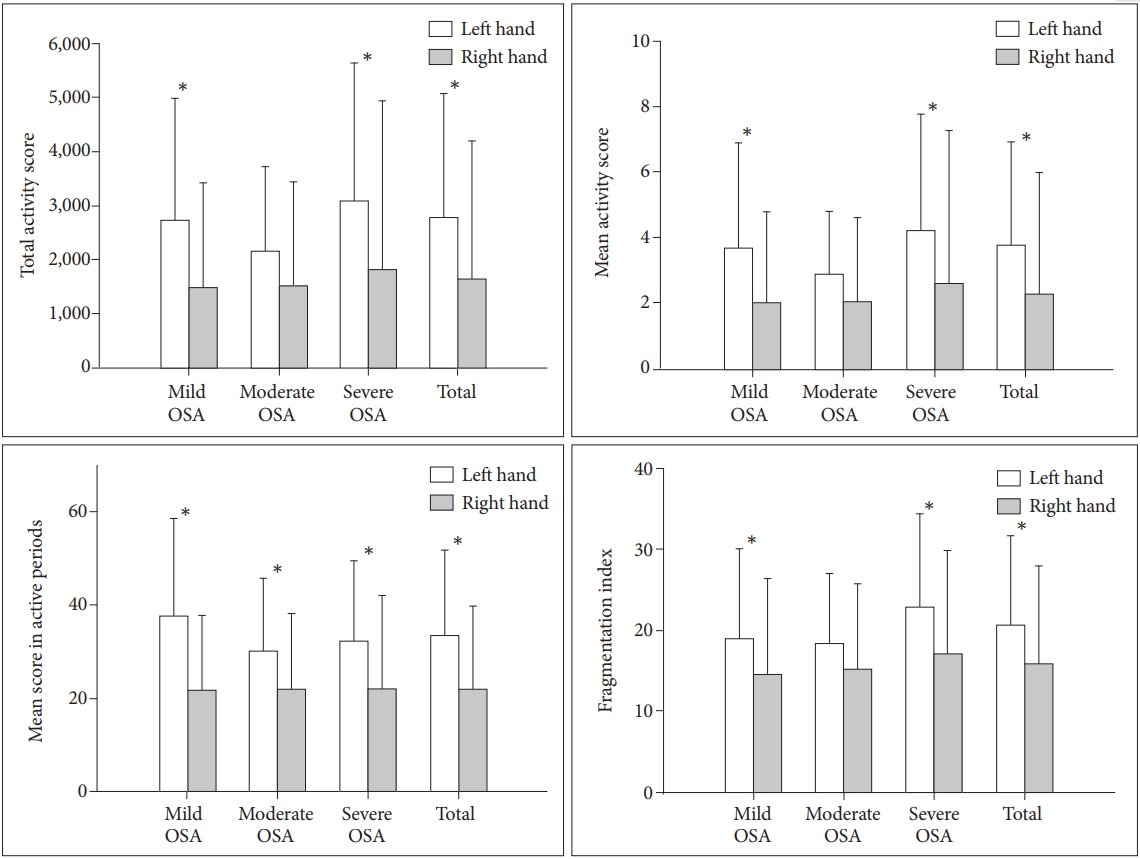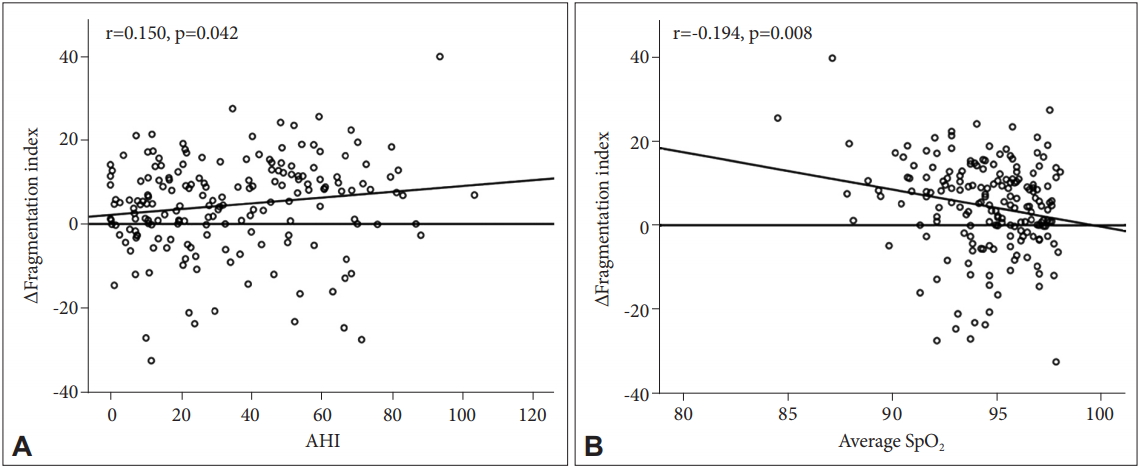 |
 |
- Search
| Psychiatry Investig > Volume 15(9); 2018 > Article |
|
Abstract
Objective
Methods
Results
Figure┬Ā1.

Figure┬Ā2.

Table┬Ā1.
Results represent the mean┬▒standard deviation. Group A: actigraph I was worn on the left wrist, and actigraph II was worn on the right wrist, Group B: actigraph II was worn on the left wrist, and actigraph I was worn on the right wrist. BMI: body mass index, SBP: systolic blood pressure, DBP: diastolic blood pressure, TIB: time in bed, SPT: sleep period time, TST: total sleep time, SL: sleep latency, SE: sleep efficiency, SWS: slow-wave sleep, REM: rapid eye movement, AHI: apnea-hypopnea index, ODI: oxygen desaturation index, LM: limb movement, PLM: periodic limb movement, Average Sp2: average 2 saturation during sleep, Lowest Sp2: lowest O2 saturation during sleep
Table┬Ā2.
Total activity score: summation of all activity counts during the sleep period, mean activity score: the magnitude of activity on a per-epoch basis during sleep determined by dividing the total activity score by the number of epochs during the assumed sleep period, mean score in active periods: the average activity score in those epochs where scores of greater than zero were recorded during the assumed sleep period, fragmentation index: an index of restlessness calculated by summing the percent of minutes moving and the percent immobility phases during 1 min. Group A: actigraph I was worn on the left wrist, and actigraph II was worn on the right wrist, Group B: actigraph II was worn on the left wrist, and actigraph I was worn on the right wrist. WATG: wrist actigraphy
Table┬Ā3.
Total activity score: summation of all activity counts during the sleep period, mean activity score: the magnitude of activity on a per-epoch basis during sleep determined by dividing the total activity score by the number of epochs during the assumed sleep period, mean score in active periods: the average activity score in those epochs where scores of greater than zero were recorded during the assumed sleep period, fragmentation index: an index of restlessness calculated by summing the percent of minutes moving and the percent immobility phases during 1 min. Group A: actigraph I was worn on the left wrist, and actigraph II was worn on the right wrist, Group B: actigraph II was worn on the left wrist, and actigraph I was worn on the right wrist. Δ value indicates the difference in indices between the left hand and the right hand. AHI: apneahypopnea index, Average SpO2 : average O2 saturation during sleep, Lowest SpO2 : lowest O2 saturation during sleep, WATG: wrist actigraphy
REFERENCES






